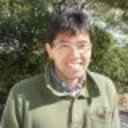[Studies on urinary protein components in renal disease in children, II--Comparison between children with orthostatic albuminuria and children with remission of glomerulonephritis].
کلید واژه ها
خلاصه
The urinary protein components of 14 children with orthostatic albuminuria (group OA) and also that of 9 children with remission of IgA nephropathy or Henoch-Schönlein purpura nephritis (group GN) after forced lordosis were analyzed. The results were as follows; (1) Urinary total protein excretions after forced lordosis were greater than 30mg/dl in 50% of 26 children with remission of glomerulonephritis, therefore a high percentage of children with remission of glomerulonephritis were complicated with orthostatic albuminuria. (2) Urinary total protein excretions after forced lordosis were 150 +/- 91mg/dl in the group of OA and 149 +/- 88mg/dl in GN (p > 0.05). (3) In the urinary protein components, the percentage of urinary albumin and alpha 1-antichymotrypsin excretions were significantly higher in the OA group than the GN group (p < 0.01, p < 0.001 respectively), while the percentage of urinary transferrin, IgA and IgG excretions were significantly higher in the GN group than the OA group (p < 0.01, p < 0.001 and p < 0.05 respectively). (4) The ratio of urinary IgG/IgA and serum IgG/IgA was significantly lower in the GN group than the OA group (p < 0.05), suggesting that serum IgA tended to be excreted in urine in the GN group.


